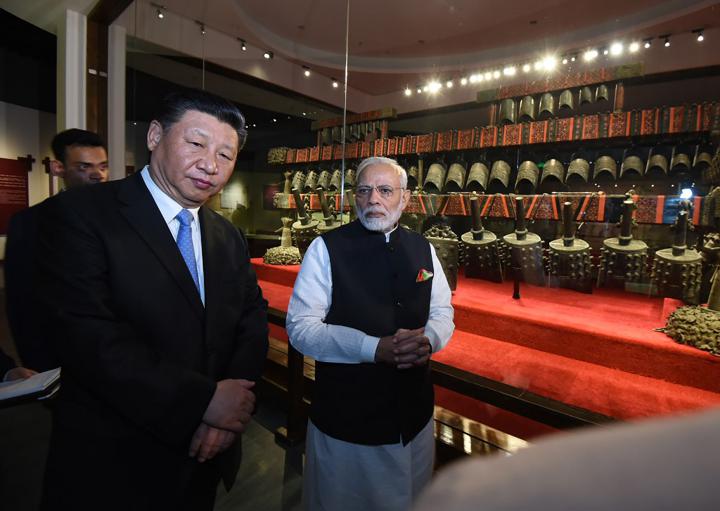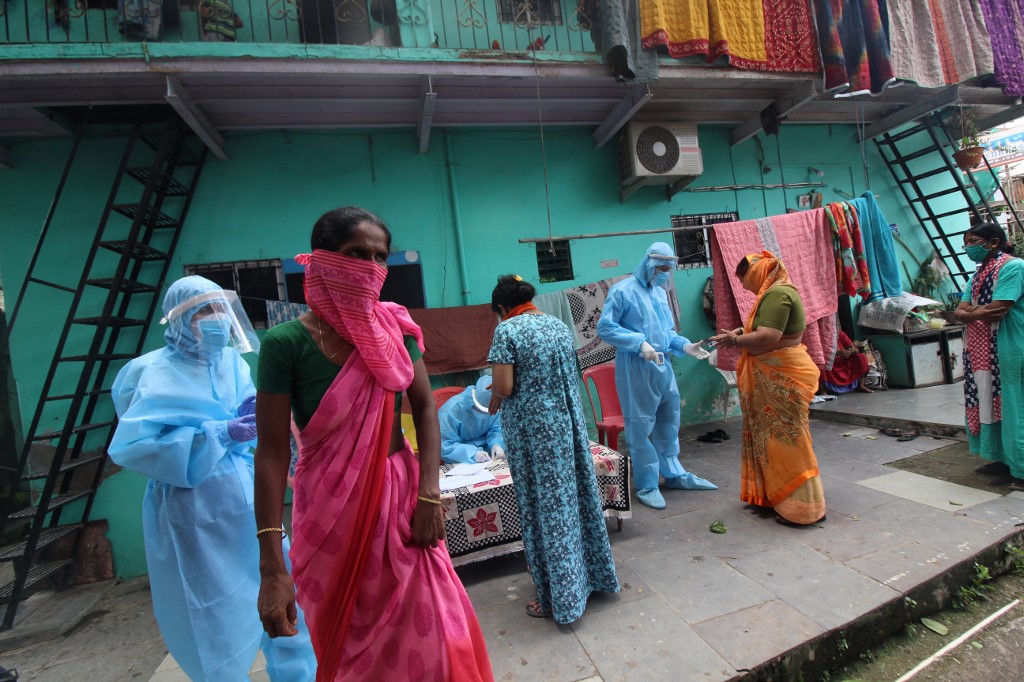An acute shortage of workers has turned the roar of machines to a soft hum at a footwear factory near New Delhi, just one of thousands in India struggling to restart after an exodus of migrant workers during the virus lockdown.
India is slowly emerging from strict containment measures imposed in late March as leaders look to revive the battered economy, but manufacturers don’t have enough workers to man the machinery.
The big cities – once an attractive destination for workers from poor, rural regions – have been hit by reverse migration as millions of labourers flee back to their far-flung home villages, some uncertain if they will ever return.
“Sixty percent of our labourers have gone back. How can we run a production unit with just one-third of our workforce?” asked Sanjeev Kharbanda, a senior executive with Aqualite Industries, which owns the footwear factory in the northern state of Haryana.
Kharbanda said the company’s sports shoe unit had been sitting idle as there were no skilled workers to operate the high-tech machines.
“We are running just one shift now. The cost of production has gone up and our profits are going down,” he said, a conveyor belt carrying semi-finished flip-flops running slowly in the background.

Labourers work at the Aqualite footwear factory in Bahadurgarh in the north Indian state of Haryana, after the government eased its nationwide lockdown imposed against the coronavirus. This is just one of thousands of factories struggling to restart after the exodus of rural migrants caused by the virus lockdown. Photo: Money Sharma/ AFP
In Gujarat state’s Surat city – where 90% of the world’s diamonds are cut and polished – many factories have been unable to open after more than two-thirds of workers fled, Surat diamond association president Babu Kathiriya said.
Jobless and hungry
Meanwhile, the state’s salt refineries have started doubling salaries to lure staff back. But experts say the workers may not return anytime soon.
“A lot of the manufacturing industry is actually located in the very states where the pandemic’s impact has been great (such as) Tamil Nadu, Gujarat, Maharashtra, Delhi,” Professor Santosh Mehrotra at Jawaharlal Nehru University said.
“Now these are the areas where naturally workers have left in large numbers… They will not return in a hurry.”
There are an estimated 100 million migrant workers – nearly a fifth of the labour force and contributing to an estimated 10% of GDP – across the nation of 1.3 billion people.
Many are employed as cheap labour across a vast range of sectors including textiles, construction, mines and small businesses.
But when the lockdown was suddenly imposed by the government, many found themselves almost immediately out of a job and unable to pay rent.
Without public transport after interstate trains and buses were halted, some embarked on long journeys home on foot in the scorching heat, with around 200 dying from exhaustion or accidents according to the non-profit Save Life Foundation.
The government eventually organised special train services to take millions stranded in cities back to their home states.
Experts say India’s economy – Asia’s third-biggest and already stuttering before the pandemic – will be badly hit in the short-term at a minimum by the lack of workers.
Invisible workers
The economy is forecast to grow at its slowest pace in 11 years, and analysts are bracing for a severe contraction in the current quarter.
The government has announced a 20 trillion rupee ($266 billion) stimulus package but observers do not expect much of a boost, at least not in the short term, while there are fears the exodus of migrant workers may have set the economy back by 15 years.
“Their departure itself has been traumatic. They have gone through many indignities,” said Mehrotra.
“Some of them may come back, but many of them will look for work not in metro cities but in small towns close by which are less impacted by the virus.”
It is unclear if they will find jobs back home, with the rural economy already in distress owing to low crop prices and yields.
But Mohammed Naseem Aktar, who lost his job as a worker at an export house in New Delhi, said he was willing to take the risk.
“I had no work for two months here and I faced a lot of problems,” the 21-year-old said as he queued up to register for a train seat. “The disease is showing no signs of a let-up. Now I just want to be with my family in the village.”

Indian PM Narendra Modi, centre, and Chinese President Xi Jinping visiting the Hubei Museum in Wuhan in 2018. The two leaders are seeking to peacefully resolve the latest border dispute in Ladakh. Photo: AFP
Peaceful end to border row sought
Meanwhile, India and China have agreed to “peacefully resolve” a latest border flare-up that has heightened tensions between the nuclear-armed neighbours, New Delhi said on Sunday, after a high-level meeting between army commanders.
Tensions have flared in recent weeks between the two regional powers over their 3,500-kilometre frontier, which has never been properly demarcated. Thousands of troops from both countries are involved in the face-off concentrated in India’s Ladakh region, just opposite Tibet.
“Both sides agreed to peacefully resolve the situation in the border areas in accordance with various bilateral agreements,” the foreign ministry said in a statement.
The ministry added that the commanders agreed an “early resolution” was “essential” for bilateral relations between the world’s two most-populous nations.
“Accordingly, the two sides will continue the military and diplomatic engagements to resolve the situation and to ensure peace and tranquility in the border areas,” the statement said.
There have been numerous face-offs and brawls between Chinese and Indian soldiers at the frontier, but they have become more frequent in recent years.
On May 9, several Indian and Chinese soldiers were injured in a high-altitude cross-border clash involving fists and stone-throwing in Sikkim state.
Indian officials said that within days, Chinese troops encroached over the demarcation line in the Ladakh region, further to the west. India moved extra troops to positions opposite.
The talks, which took place in the Chushul-Moldo region between the two commanders, is believed to be the highest-level meeting since the Sikkim exchange.
India’s Prime Minister Narendra Modi and his Chinese counterpart Xi Jinping have sought to ease the tensions at summits over the past two years when they agreed to boost border communications between their militaries.
AFP
























